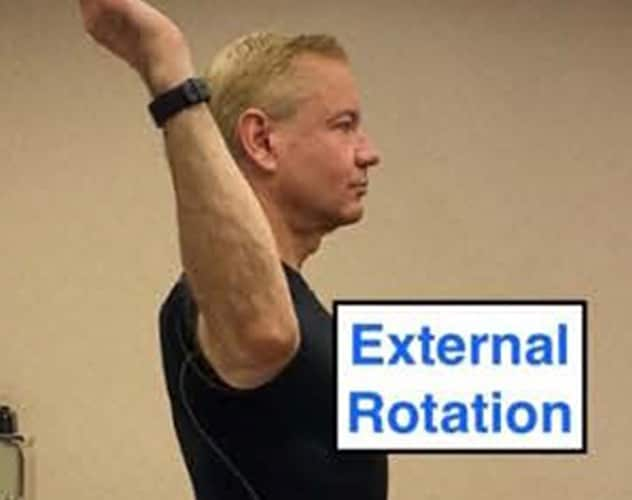Jan. 07, 2021
The coronavirus disease 2019 (COVID-19) pandemic has influenced significant nationwide changes in health care access and delivery. Many institutions and providers are now using telehealth services to continue providing medical care in a timely and efficient manner while preserving the safety of health care professionals and patients.
Musculoskeletal complaints are among the most common reasons that patients seek medical care. Developing a consistent framework for practitioners to use while conducting virtual musculoskeletal physical examinations will be helpful both during the current pandemic and as telemedicine continues to evolve.
Laskowski demonstrates virtual shoulder exam technique

Laskowski demonstrates virtual shoulder exam technique
In a video designed to teach viewers how to conduct a virtual exam of the shoulder, Dr. Laskowski demonstrates proper technique and body positioning for self-palpation, range-of-motion assessment and muscle strength testing; special tests for the rotator cuff, acromioclavicular joint and shoulder anterior instability; and the labral provocative and bicipital tendon tests. The shoulder exam video is one of several developed by Mayo Clinic physiatrists to help clinicians learn to conduct virtual evaluations of the hand, wrist, elbow, shoulder, hip, knee, ankle, and cervical and lumbar spine.
In an article published in Mayo Clinic Proceedings in 2020, lead author Edward R. Laskowski, M.D., and colleagues provide a specific set of guidelines, both written and visual, to enhance the information obtained when performing a virtual evaluation of the shoulder, hip, knee, ankle, and cervical and lumbar spine. The article provides photographs and videos to describe and demonstrate specific physical examination techniques that the patient can self-perform during a virtual telehealth appointment. Dr. Laskowski is a physiatrist and former co-director of Sports Medicine at Mayo Clinic's campus in Rochester, Minnesota.
"Many of the physical examination maneuvers that we perform during a face-to-face exam are difficult to replicate during a video exam. We tried to take some of the validated and accepted physical examination techniques that we all use every day and apply them to the virtual situation. These telemedicine tools may also help providers meet the demand for virtual visits even after the current pandemic subsides," says Dr. Laskowski. He notes that many of these virtual exam techniques involve the patient performing these maneuvers themselves with the proper instruction.
In a related effort, Mayo Clinic physiatrist Michael C. Wainberg, M.D., and colleagues published an article and a video in the American Journal of Physical Medicine and Rehabilitation in 2020 that instructs providers in how to conduct a virtual hand examination. Dr. Wainberg is the outpatient practice medical director in Physical Medicine and Rehabilitation at Mayo Clinic's campus in Rochester, Minnesota, and his interests include musculoskeletal disorders and spasticity management. The video provides clinicians with instructions for conducting a virtual appointment that includes examinations of the elbow, forearm, wrist and hand, as well as more-proximal etiologies.
"Our video attempts to give providers a clear picture of the physical examination components, including range of motion, sensation, strength testing, functional assessment, special tests and provocative maneuvers," explains Dr. Wainberg. "Although telemedicine was initially intended to improve health care for patients in remote settings, we are broadening the applications for this technology and developing new virtual exam techniques. This helps us continue to provide care that is safe, cost-efficient and convenient during the pandemic and in the future. Virtual encounters are becoming more widely accepted, with high patient satisfaction." says Dr. Wainberg.
For more information
Laskowski ER, et al. The telemedicine musculoskeletal examination. Mayo Clinic Proceedings. 2020;95:1715.
Wainberg, MC, et al. The telemedicine hand examination. American Journal of Physical Medicine and Rehabilitation. 2020;99:883.